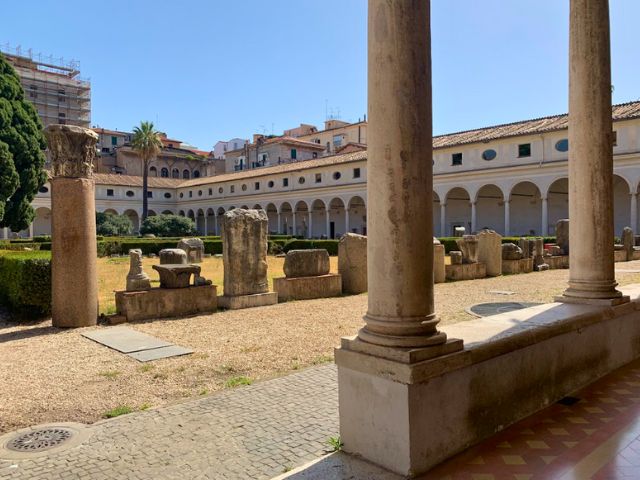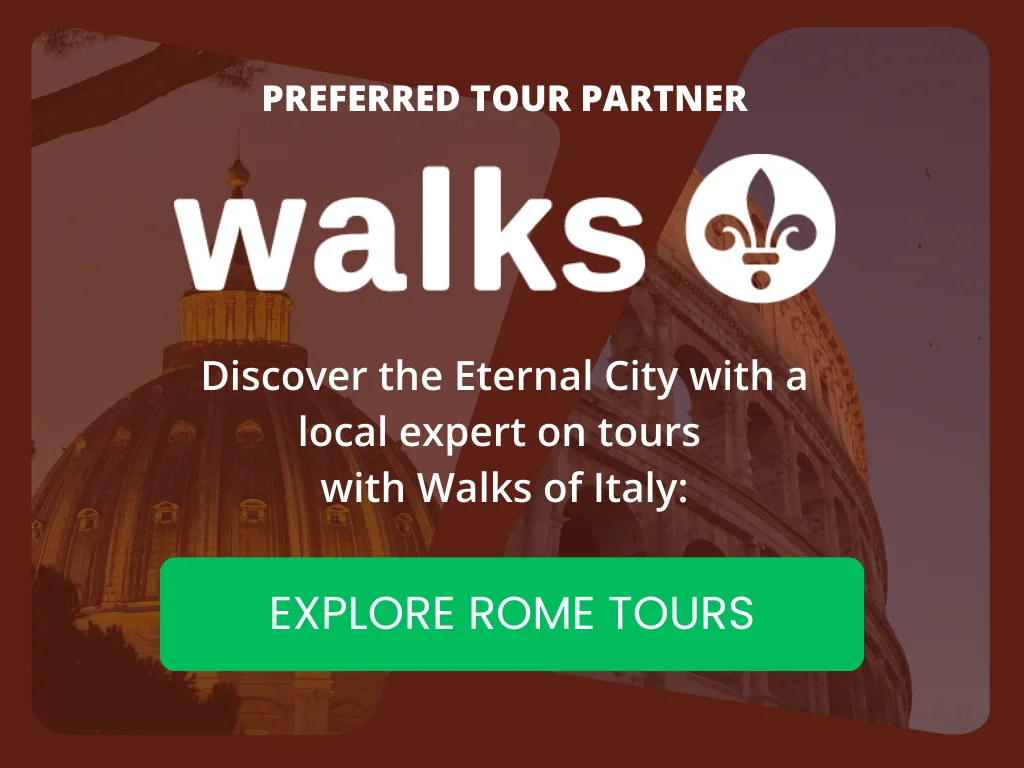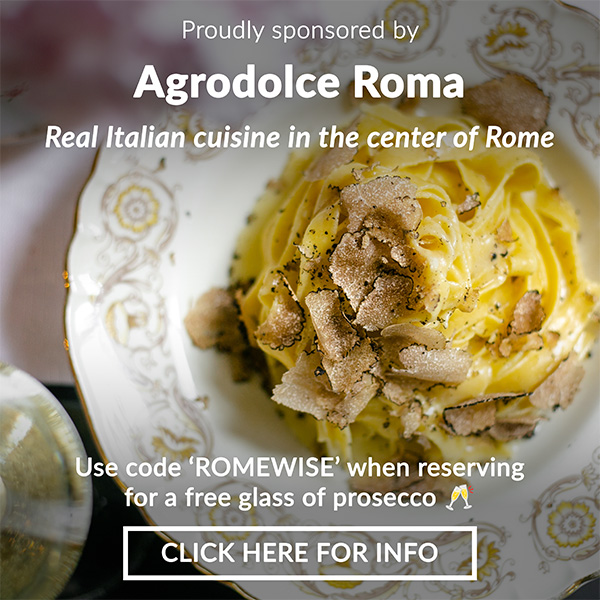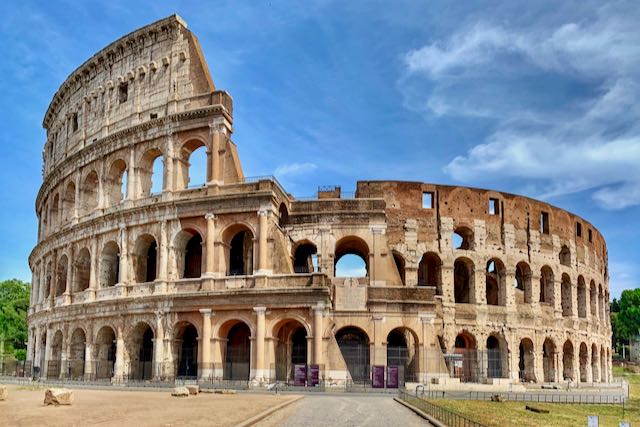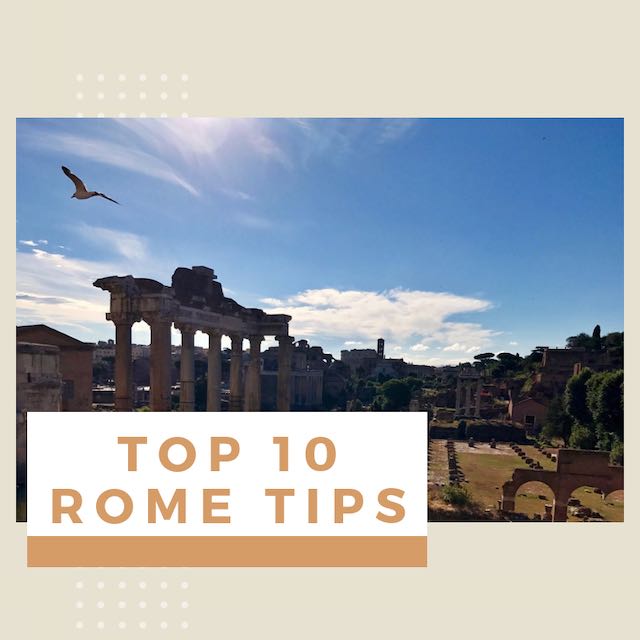- Sign up & get a FREE ebook Subscribe NOW!
- Romewise Home Page
- What to Do in Rome
- michelangelo in rome
Where To See Michelangelo In Rome – Awe-Inspiring Places You’ll Love
Since Michelangelo is my favorite artist of all time, I think I'm pretty lucky to live in a city where I can see so many works by him.
 Most people never visit this church, let alone see this amazing statue of Christ the Redeemer by Michelangelo.
Most people never visit this church, let alone see this amazing statue of Christ the Redeemer by Michelangelo.And while I know many of you come to Rome to see Michelangelo's masterpieces at the Vatican - his Pietà and his Sistine Chapel ceiling, you may be interested to know that you can find his work throughout the city.
Discovering Michelangelo in Rome - Everything you need to know
Michelangelo was born near Florence and began his working life there.
His work in that city is second to none, but I don't think many people realize that Michelangelo spent most of his life in Rome.
His talent shone through before he was even 20 years old.
At around that time, he began what would become a lifetime of working for patrons in Rome, from wealthy individuals to, of course, the pope.
And it was not just "the pope." Michelangelo would eventually work for 9 popes.
So, besides all his work you can see in Vatican City, where else can you find Michelangelo in Rome?
While his work on the Sistine Chapel ceiling is world-famous, Michelangelo's masterpieces can be found all over the city in museums, churches, and piazzas.
On this page we'll be talking about:
- Michelangelo at the Vatican
- Sculptures by Michelangelo in Rome
- Michelangelo's architectural work
- Other places to see Michelangelo's work
Michelangelo at the Vatican
Michelangelo created vast amounts of artwork for the Vatican.
His most famous contributions are undoubtedly the designs for St Peter's Basilica and the frescoes on the Sistine Chapel ceiling in the Vatican Museums.
St Peter's Basilica
The first version of Saint Peter's basilica, also known as the Constantinian basilica had been built without proper foundation.
By the end of the 15th century, it was unstable and leaning heavily to one side.
Pope Nicholas V, (1447–55) decided it was time to rebuild the basilica, although his project never got off the ground.
Pope Julius II, the same pope who harangued Michelangelo into painting the ceiling of the Sistine Chapel, realized in the early 1500s that Saint Peter's Basilica needed to be rebuilt as it was literally falling apart.
Many artists and architects were tasked with coming up with the design for what would be the new basilica, but the job of chief architect would eventually fall to Michelangelo in 1546, when Pope Paul III had him take over.
Michelangelo worked on Saint Peter's Basilica until his death. While he designed the beautiful cupola, he never got to see it completed.
He modelled the basilica's dome partly on the Rome Pantheon, and partly on the dome of Florence cathedral (both church's domes consist of two shells).
Not only did he redesign St Peter's Basilica on its original Greek cross floor plan, but one of his most stunning marble sculptures is inside.
 Even though the pietà is one of Michelangelo's earliest works, I always consider it one of his greatest achievements.
Even though the pietà is one of Michelangelo's earliest works, I always consider it one of his greatest achievements.The Pietà depicts the Virgin Mary holding her crucified son moments after his death.
It's one of the key pieces of Renaissance art and the only piece of Michelangelo's art he ever signed.
To discover more about St Peter's Basilica, check out all our essential St Peter's Basilica visitor information here.
Vatican Museums
Two of Michelangelo's most famous masterpieces are in the Sistine Chapel, located in the Vatican Museums.
He frescoed the Sistine Chapel ceiling between 1508 and 1512.
Pope Julius II commissioned Michelangelo for the job, despite fierce objections by the artist that he was a sculptor, not a painter.
But, as we all know, Michelangelo lost that argument.
He painted nine scenes from the Book of Genesis on the ceiling of the Sistine Chapel.
Probably the most famous scene, the Creation of Adam, is in the center.
Later, between 1536 to 1541, Michelangelo painted The Last Judgement fresco on the altar wall of the Sistine Chapel.
At the request of Pope Paul III, he also painted two large frescoes for the Pauline Chapel (also known as the Chapel of Saint Peter and Saint Paul).
This chapel is not open to the public.
 Michelangelo painted these scenes towards the end of his life, and while they are not as brilliant as the frescoes inside the Sistine Chapel, I think they are wonderful just the same.
Michelangelo painted these scenes towards the end of his life, and while they are not as brilliant as the frescoes inside the Sistine Chapel, I think they are wonderful just the same.Sculptures by Michelangelo in Rome
The pietà may be Michelangelo's most famous sculpture in Rome, but there are a couple more to see, and they are worth going out of your way for.
Moses and the Tomb of Pope Julius II - Church of San Pietro in Vincoli
Pope Julius II commissioned Michelangelo to create his funeral monument in 1505.
It began as one of the earliest works by artist in Rome, but it wasn't completed until 1545 (32 years after the pope's death) and Michelangelo, ever the perfectionist, was never completely satisfied with it.
Originally designed to be a massive structure with 40 different statues, the final monument was much smaller than intended.
It had run way over budget and time.
Pope Clement VII gave the artist his final instructions to place the monument in the basilica of Saint Peter in Chains, San Pietro in Vincoli, not St Peter's Basilica.
It's said that one of Michelangelo's favorite pieces of art that he made is Moses, the figure in the center.
 The detail on the figure of Moses is exceptional - it's easy to see why Michelangelo was so proud of it
The detail on the figure of Moses is exceptional - it's easy to see why Michelangelo was so proud of itHe considered his sculpture of the prophet so lifelike that he even commanded the statue to speak.
If you look closely at Moses's knee, you can supposedly see the mark where the artist banged his hammer in frustration when he didn't.
The Basilica of San Pietro in Vincoli is open daily from 8:00AM - 12:30PM and 3:00PM - 6:00PM.
Entrance is free.
The Risen Christ - Church of Santa Maria Sopra Minerva
Commissioned to sculpt a naked Christ by Roman Patrician Metello Vari, Michelangelo abandoned his first attempt after discovering a flaw in the marble.
He made a second version between 1519–1521.
It's the photo at the top of this page.
While an awkward loincloth was later added, the artist's contemporaries loved this piece.
Painter Sebastiano del Piombo supposedly said that Christ's knees were worth more than Rome put together.
You can find the Basilica of Santa Maria Sopra Minerva near the Pantheon.
I always make a point to go inside when I pass by.
The church is open daily 11:00 AM - 1:00 PM and 3:00 PM - 7:00 PM and is free to visit.
Michelangelo's architectural work
Michelangelo started his architectural career in Florence under Pope Leo X.
It wasn't long before he was commissioned as an architect in Rome to work on piazzas, basilicas, and palaces.
Piazza del Campidoglio
Embarrassed by the thought of Emperor Charles V visiting the muddy Piazza del Campidoglio, Pope Paul III quickly hired Michelangelo to redesign the rundown space.
It sits on top of Capitoline Hill, one of Rome's Seven Hills, and offers beautiful views over the Roman Forum.
Michelangelo designed a trapezoid-shaped Piazza del Campidoglio to frame a bronze equestrian statue of Marcus Aurelius in the center.
Even the pavement is striking with its contrasting geometric pattern, which was completed to the artist's specifications, only in 1940.
Michelangelo also designed the grand Cordonata ramp staircase.
 The piazza revolves around this bronze statue - now a copy of the original which was moved to the next door Capitoline Museums to preserve it
The piazza revolves around this bronze statue - now a copy of the original which was moved to the next door Capitoline Museums to preserve itPiazza del Campidoglio is flanked on either side by the Palace of the Conservators and Palazzo Nuovo, building the latter to be completely symmetrical to the original palace.
Today, they are the Capitoline Museums which are well worth visiting.
 The palaces either side of the piazza are home to a wonderful museum that is one of my favorites in Rome
The palaces either side of the piazza are home to a wonderful museum that is one of my favorites in RomePiazza del Campidoglio can be found on top of Capitoline Hill.
It's around the corner from the Monument to Victor Emmanuel II and many buses stop nearby.
The Colosseo metro station is the nearest one, about 10 minutes walk from the Capitoline.
The piazza itself is free and open 24/7.
Check out our Capitoline Museums guide for more information on how to visit inside.
Basilica di Santa Maria degli Angeli e dei Martiri
Michelangelo designed the vaulted ceilings of the Basilica of Santa Maria of the Angels and Martyrs in 1559.
Its full name in Italian is the Basilica di Santa Maria degli Angeli e dei Martiri.
It was built on the site of the ancient Baths of Diocletian, large imperial baths whose ruins still stand today.
He incorporated the remaining walls of one part of the sprawling baths into the design of the basilica.
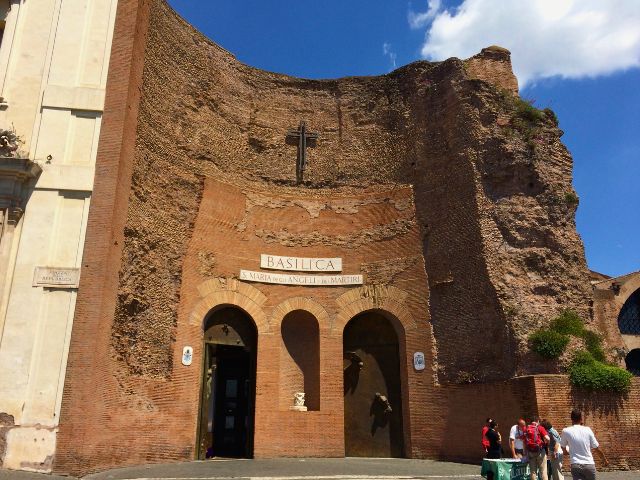 The ancient ruins were not demolished so you can clearly see how the church building works within them
The ancient ruins were not demolished so you can clearly see how the church building works within themThe basilica is located on Piazza della Repubblica with a metro stop on the other side of the piazza.
It's open from 8 AM - 1 PM and 4 PM - 7 PM every day except Saturday and Sunday.
On these days, the Basilica di Santa Maria degli Angeli e dei Martiri opens two hours later.
It's always free to visit.
He also designed a cloister in another part of the ancient bath complex.
You can see this if you visit the Baths of Diocletian, which I highly recommend.
The baths are around the corner from the Basilica di Santa Maria degli Angeli e dei Martiri, and is a favorite spot of mine to visit as it's rarely busy.
The museum is open 9:30AM - 7:00PM Tuesday to Sunday.
Palazzo Farnese
Palazzo Farnese was one of the most important High Renaissance palaces.
It was commissioned by Alessandro Farnese (the future Pope Paul III), and was originally designed by Antonio da Sangallo the Younger.
When Sangallo died in 1546, Michelangelo took over the project.
He completely redesigned the courtyard and revised the third story by adding a deep cornice to the roof.
Another addition was the architrave, a papal balcony, as Pope Paul III received his title during its build.
Piazza Farnese is one piazza over from Campo di Fiori.
The palazzo is now the French embassy.
You can visit Palazzo Farnese on pre-booked, guided tours which run at limited times, so definitely book well in advance if you would like to see inside.
Piazza Farnese is open 24/7 year-round.
No matter what season you visit Rome, here are 4 essential things we recommend never leaving home without:
Disclosure: If you make a purchase through a link on this page, I may receive a small commission - at no extra cost to you. Thank you for supporting my site!
Other architectural work by Michelangelo in Rome
Porta Pia was one of the last works Michelangelo completed before his death.
It was built between 1561 and 1564.
Famously, it's the last gate the Italian Army breached in 1870 to conquer Rome and make it part of the Kingdom of Italy.
Pope Pius IV commissioned the 'improvement' to one of the original Aurelian Gates and named it after himself.
Michelangelo was one of two architects who worked on the Sforza Chapel in Basilica di Santa Maria Maggiore in the mid-1500's.
Sometime between 1513 and 1521, he also designed an aedicula (small shrine) in the Chapel of Leo X in Castel Sant'Angelo.
Other places to see Michelangelo's work
Michelangelo's art and architecture might be concentrated in Rome and Florence, but he left his mark all over Italy.
You can discover some of his famous works in Bologna, Venice, Siena, and Milan too.
Michelangelo in Florence
Naturally, Michelangelo's 17 ft/5.17 m-tall statue of David is a must-see.
Find it in the Accademia Gallery, along with four more of his pieces.
One of his earliest major works, Michelangelo crafted a Crucifix in 1493 from polychrome wood which is on display in the Santo Spirito church (there is doubt as to whether it's really by Michelangelo.)
The Uffizi Gallery is Florence's main art gallery, and there you'll find the Tondo Doni, an oil painting he created in 1503-1506.
You can also find several of his works in the Bargello Museum, Casa Buonarroti, and the Medici Chapels.
Other Italian locations
Michelangelo spent around a year in Bologna when he was nineteen.
He made three marble statuettes on The Ark of St Dominic in Basilica San Domenico in 1494-1495.
He also carved four marble statues of saints for Siena Cathedral in 1503-1504, although they're much bigger!
Check out St Peter, St Paul, St Gregory, and St Pius inside.
Head to Sforza Castle in Milan to see Rondanini Pietà, a sculpture he worked on during the last days of his life in 1564.
Romewise's Top Travel Resources
Ready to book your trip to Rome? Take a look at these helpful links to companies we use and trust:
- Keep your travel spending simple with the Wise card, which removes all the worry about exchange rates and high transaction fees all over the world
- Search for and book your perfect accommodation
- Our complete guide to what to pack for Rome
- The number one travel accessory, a multi-point travel adapter and voltage converter
- Browse a huge range of tours in Rome and beyond
- Experience unique tours and special access to Rome's most popular sights
- Protect yourself with comprehensive travel insurance
Within this post there are some affiliate links for products and services. For more details about our affiliate policy click here.
Get your 100% free Rome trip planner now!
Simply sign-up today for our free newsletter and get the Romewise Quick Start guide to Rome:
We are committed to respecting your data. Click for our Privacy Policy.
Comments? Questions? Suggestions?
Please come over to the private Romewise Facebook group and join in the conversation.
You will often find me there, happy to answer your questions / comments!
You will also meet other Rome lovers and experts, too.
What are you waiting for?
- Romewise Home Page
- What to Do in Rome
- michelangelo in rome





